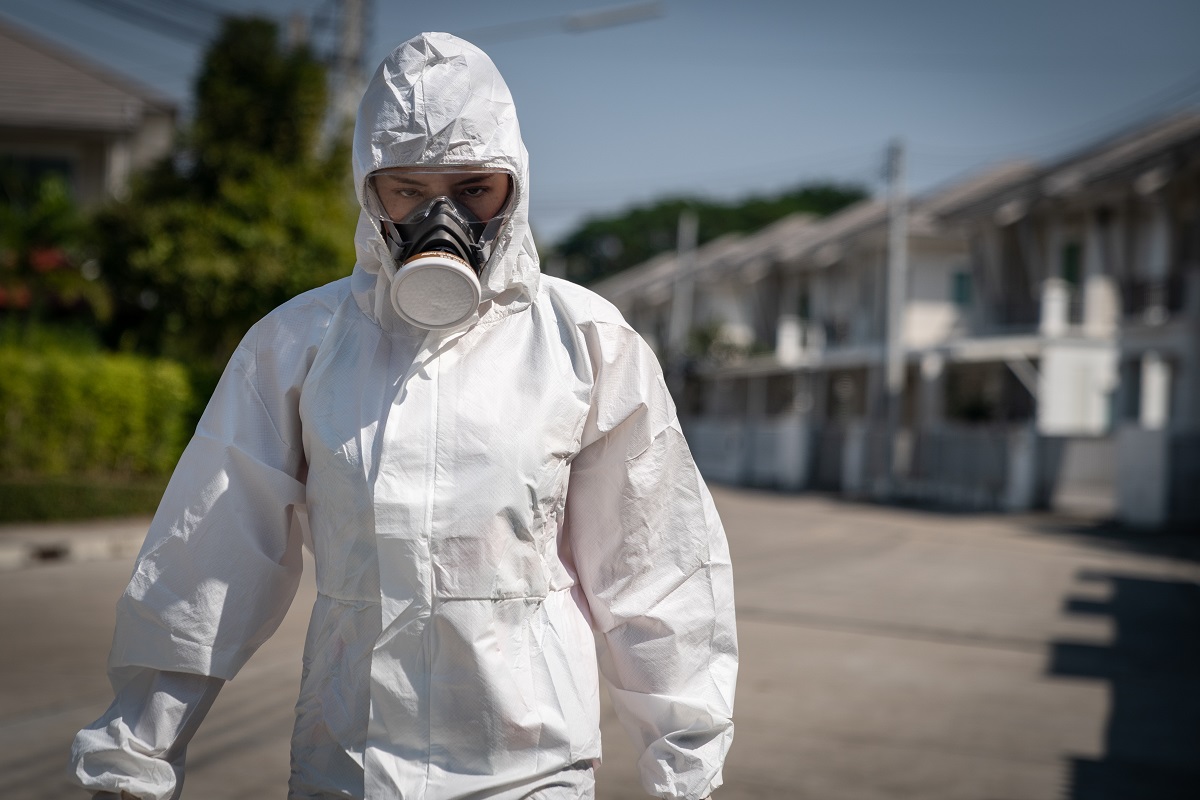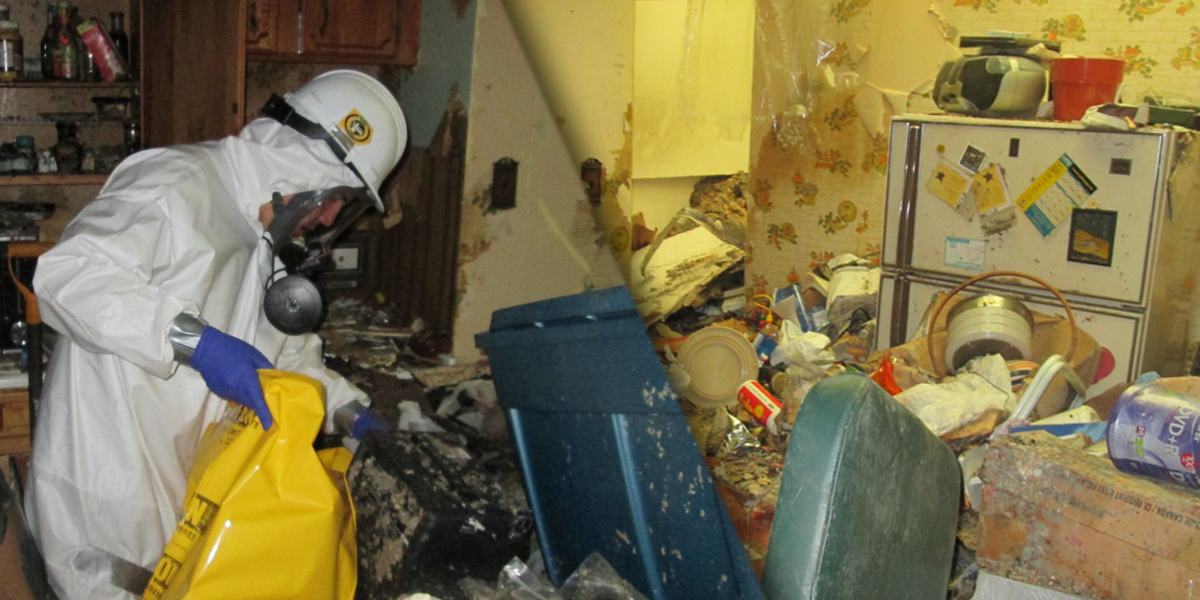Hoarder Cleanup Solutions: Improving Order and Safety And Security in Your Home
Wiki Article
Professional Biohazard Cleansing and Purification for Blood, Bodily Fluids, and Hazardous Materials
The prospective wellness dangers connected with direct exposure to biohazards emphasize the important need for precise handling and detailed cleanup. As we navigate the detailed landscape of biohazard cleanup, understanding the subtleties of regulations, conformity, and the specialized equipment at play ends up being essential in making sure a risk-free and extensive decontamination process.
Wellness Dangers of Biohazard Direct Exposure
Exposure to biohazards postures considerable health and wellness risks that can lead to serious consequences for areas and people alike. Biohazards encompass a broad variety of biological substances, including blood, bodily liquids, mold, microorganisms, infections, and other possibly infectious products. When individuals come into contact with these biohazards, whether through mishaps, improper handling, or environmental exposure, they deal with the threat of having severe health problems or conditions.One of the main health and wellness risks related to biohazard exposure is the transmission of transmittable conditions. Bloodborne virus such as HIV, liver disease B and C, and different microorganisms can be present in biohazardous materials, presenting a direct hazard to human health and wellness. Inhaling air-borne biohazards like mold spores or coming into contact with polluted surfaces can also cause respiratory concerns, allergic reactions, and other negative health effects.
Additionally, biohazard exposure can have long-term health and wellness ramifications, with some diseases manifesting years after the initial contact (Blood Cleanup). For that reason, it is critical to prioritize correct biohazard cleansing and decontamination to mitigate these health and wellness threats and ensure the safety of areas and people

Specialized Educating for Biohazard Cleanup
When it comes to managing biohazard clean-up effectively and securely, specialized training plays an essential role in guaranteeing appropriate purification procedures are adhered to. Biohazard cleaning needs certain expertise and skills to successfully minimize risks related to bloodborne pathogens, physical liquids, and hazardous materials. Experts learnt biohazard cleaning undertake strenuous guideline on how to safely manage, get rid of, and deal with biohazardous products to avoid contamination and exposure.Specialized training for biohazard cleanup covers a variety of necessary subjects, including correct individual safety tools (PPE) usage, bloodborne virus understanding, decontamination strategies, and contaminated materials disposal methods. People educated in biohazard cleaning are geared up with the required experience to evaluate contamination levels, recognize possible threats, and execute appropriate cleanup treatments in compliance with regulatory standards.
Continual training and education are extremely important in the area of biohazard cleaning to remain updated on the current decontamination technologies, security protocols, and policies. By buying specialized training, biohazard cleanup professionals can successfully respond to emergency clean-up situations and secure both public wellness and the atmosphere.
Relevance of Appropriate Decontamination Techniques
Utilizing proper decontamination techniques is vital in biohazard clean-up to properly get rid of unsafe products and decrease wellness dangers. Effective purification not just ensures the elimination of visible traces of blood, physical liquids, and various other biohazards yet additionally targets invisible pathogens that might present significant health and wellness risks if not appropriately removed. By adhering to stringent decontamination methods, educated professionals can dramatically lower the danger of direct exposure to hazardous microbes, infections, and bacteria that could result in conditions or infections.Appropriate purification strategies include the use of customized devices and anti-bacterials that are specifically designed to reduce the effects of biohazards effectively. Thorough cleaning and sanitation of infected areas are important to protect against the spread of pathogens and make sure a secure environment for occupants. Additionally, the correct disposal of biohazardous waste adhering to decontamination procedures is essential in preventing contamination of various other surface areas or people.

Devices and Devices for Safe Cleanup
The correct devices and tools play a crucial duty in making sure the safe and effective cleaning of biohazardous materials. When dealing with blood, physical fluids, or harmful materials, biohazard cleaning experts count on specialized equipment to minimize exposure dangers and thoroughly sanitize the afflicted area. Personal safety tools (PPE) such as handwear covers, coveralls, safety glasses, and masks are necessary to secure against direct contact with possibly contagious materials. Furthermore, biohazard cleaning kits containing disinfectants, absorbing products, and biohazard bags are used to safely dispose and have of infected products. Blood Cleanup.Advanced cleaning tools like hospital-grade anti-bacterials, HEPA-filtered vacuum cleaners, and fogging equipments are utilized to sterilize surfaces and eliminate biohazards effectively. Specialized devices such as sharps containers and biohazard garbage disposal containers are used to safely take care of sharp items and biohazardous waste materials. By using the appropriate tools and tools, biohazard cleansing experts can ensure a complete cleanup process that prioritizes safety and decreases wellness threats for both workers and occupants of the affected area.
Laws and Compliance in Biohazard Cleansing
Appropriate adherence to guidelines and conformity requirements is vital in biohazard cleansing to ensure the security of both personnel and the atmosphere. Government companies such as OSHA (Occupational Safety and Health And Wellness Management) and the EPA (Environmental Protection Agency) have established details standards for biohazard clean-up treatments to reduce wellness risks and environmental contamination. These laws cover a series of elements including the handling, transportation, and disposal of biohazardous materials, along with the necessary training and safety equipment required for workers associated with the clean-up procedure.Biohazard cleaning companies have to stay current with these policies to assure that their operations fulfill the required security requirements. Failing to abide with these guidelines can cause severe effects, consisting of fines, lawful action, and threatening the health and wellness of people and the atmosphere. By adhering to strict laws and compliance procedures, biohazard cleaning companies can efficiently mitigate threats article source and make sure a safe click for more and extensive cleaning process for all parties included.
Verdict
Finally, biohazard cleansing and purification need specialized training, correct methods, and adherence to regulations. Exposure to blood, bodily liquids, and dangerous materials positions significant wellness threats, making it crucial to use the right tools and tools for risk-free cleanup. By following rigorous protocols and guidelines, specialists can effectively reduce the threats connected with biohazard exposure and guarantee the security of both themselves and others.
As we browse the intricate landscape of biohazard cleanup, comprehending the subtleties of regulations, compliance, and the customized devices at play comes to be critical in making sure a risk-free and comprehensive purification procedure. (Blood Cleanup)
When it comes to taking care of biohazard cleaning effectively and securely, specialized training plays a basic role in guaranteeing appropriate purification procedures are adhered to.Using correct decontamination strategies is critical in biohazard clean-up to effectively decrease and eliminate hazardous materials health risks. Additionally, biohazard cleaning kits having anti-bacterials, absorbing products, and biohazard bags are made use of to safely contain and dispose of contaminated things.
Federal government agencies such as OSHA (Occupational Security and cleaning crime scene movie Health Administration) and the EPA (Environmental Protection Company) have actually established certain standards for biohazard cleaning procedures to reduce health and wellness threats and environmental contamination.
Report this wiki page